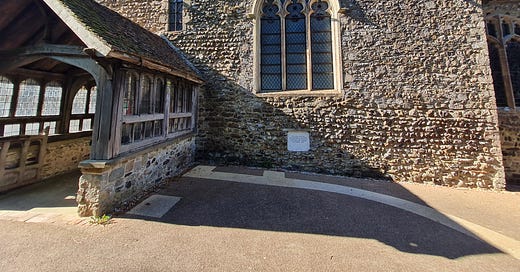The oldest known and still working church was functioning in 597 AD, when St Augustine arrived on his evangelisation push. It’s St Martin’s at Canterbury, and I have already covered it, along with the churches St Augustine built – St Pancras and his monastery church. You can read about these here and here if you want to catch up.
In the 7th century there was an explosion of church building as (according to Bede) Angles, Saxons and Jutes converted. Bede misses out the Franks; they were important in Kent and elsewhere as evangelisation by marriage helped with conversion efforts. Frankish nobles from mainland Europe married off their daughters to kings in various parts of England and one of the conditions of the marriage (as was the case in Canterbury) was that the Queen would be able to practise her faith. In order to do this, she was despatched with a retinue of religious supporters, including at least one priest. Thus the conversion of Britain progressed.
Most of the early churches are now underneath their descendants, their building materials recycled within. Of course many of them were built in wood and only replaced in stone centuries later.
The first church I have for you today is St Ethelburga, Lyminge, which I visited in 2022. It’s near Canterbury in Kent, south-east England and was built in the early 7th century; we don’t know exactly when but certainly it existed by 647 AD. St Ethelburga was of royal blood – a Queen in fact – and founded the church with its associated nunnery, of which she was the first abbess. The 7th century church doesn’t survive above ground, but in 2019 an excavation near the spot where it is believed St Ethelburga was buried revealed the apse of her church. In this photo you can see about half of the apse, which is marked on the ground. The plaque on the wall behind (probably constructed of some rubble from her church) marks the spot where it is believed she was buried, in a kind of portico just as St Augustine in Canterbury built porticos on either side of his church for burials. This church appears to have been in the basilica style (see my earlier posts), with a large atrium and big apse.
Keep reading with a 7-day free trial
Subscribe to Incola ego sum in terra to keep reading this post and get 7 days of free access to the full post archives.



